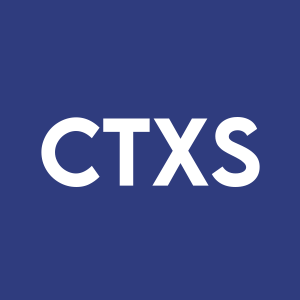IT Leaders Prioritize Secure Remote Work
According to a recent Citrix survey of 400 IT leaders across North America, EMEA, and APAC, 100% have adopted a hybrid work model, prioritizing it as essential. As organizations adjust strategies to secure future productivity, employee collaboration emerges as the top focus. Key priorities include ensuring availability and automating work. However, participants cited challenges such as lack of cloud investment and complex infrastructure. Security risks remain high with 41% concerned about ransomware. Leaders plan to bridge cybersecurity gaps and manage digital acceleration, highlighting the necessity of adapting to hybrid work.
- 100% adoption of hybrid work model among surveyed IT leaders.
- Top priority identified as enabling distributed collaboration, enhancing productivity.
- Plans to invest in cybersecurity and digital transformation solutions.
- 41% cited lack of understanding business needs for prioritizing investments.
- 34% reported cumbersome, complex infrastructure as a hurdle.
- Security risks, including ransomware attacks, are significant concerns.
Respondents to
“In 2020, IT was focused on survival amid the great remote work pressure test. In 2021, they overhauled their infrastructure and strategies to accommodate this new model. And in 2022, they will enact flexible technology strategies and workplace policies to deliver what is clearly the future of work,” said Meerah Rajavel, Chief Information Officer,
Leading the Charge
Business leaders who once bristled at the idea of remote work because they didn’t think employees could deliver outside the office now see the benefits it can deliver in terms of employee productivity and experience. They are calling on IT to enable it, and as revealed by the Citrix-Pulse survey, they’re answering.
When asked to rank their top five priorities over the next five years, respondents said:
- Enabling distributed collaboration
- Ensuring always-on availability
- Empowering individual focus
- Providing a consistent, consumer-like experience from device to device and location to location
- Automating work
Leaping Hurdles
But they’ll face some challenges in executing. When asked to identify the top obstacles to driving digital transformation,
- Lack of understanding the needs across the business to effectively prioritize investments (41 percent)
- Cumbersome, complex infrastructure (34 percent)
- Lack of investment in cloud (24 percent)
Security is also a concern. When asked what they see as the top risks opened by remote and hybrid work, those polled called out:
- Ransomware attacks (41 percent)
- Insider threats (18 percent)
- API/software breaches and vulnerabilities (16 percent)
- Phishing and cloud-related attacks (15 percent)
And, their teams are stretched to the max, with respondents noting:
- 70 percent are working more hours
- 56 percent are leaving
- 50 percent are experiencing decreased productivity
- 49 percent are less satisfied with their jobs
- 24 percent are disengaged
Pushing Forward
How do the leaders polled plan to overcome these challenges? By focusing on seven key things:
- Bridging the cybersecurity gap (32 percent)
- Managing the pace of digital acceleration with cybersecurity investment (29 percent)
- Zero Trust Network Access (14 percent)
- Vendor consolidation/simplification (13 percent)
- Security AI and automation (7 percent)
- App/API protection and/or browser isolation for SaaS and web apps (3 percent)
- Acceleration to SASE (2 percent)
“When it comes to securing a workforce that cycles in and out of the office, ensuring an even playing field for collaboration and supporting employees through what remains a time of unprecedented upheaval, IT can no longer afford to make yesterday’s compromises between distributed collaboration and security,” Rajavel said. “Instead, they must implement solutions and strategies that help them balance these seemingly competing priorities and chart a new course that allows them to deliver the future of flexible work.”
About
For
This release contains forward-looking statements which are made pursuant to the safe harbor provisions of Section 27A of the Securities Act of 1933 and of Section 21E of the Securities Exchange Act of 1934. The forward-looking statements in this release do not constitute guarantees of future performance. Those statements involve a number of factors that could cause actual results to differ materially, including risks associated with the impact of the global economy and uncertainty in the IT spending environment, revenue growth and recognition of revenue, products and services, their development and distribution, product demand and pipeline, economic and competitive factors, the Company's key strategic relationships, acquisition and related integration risks as well as other risks detailed in the Company's filings with the
© 2022
View source version on businesswire.com: https://www.businesswire.com/news/home/20220119005061/en/
+1 216-396-4683
Karen.master@citrix.com
Source:
FAQ
What are the key findings of the latest Citrix survey regarding hybrid work?
What challenges do IT leaders face in implementing hybrid work according to Citrix?
What security concerns did Citrix survey respondents highlight for hybrid work?







